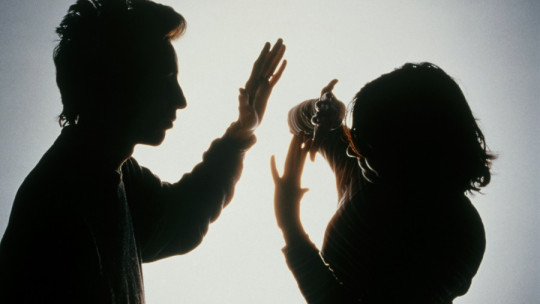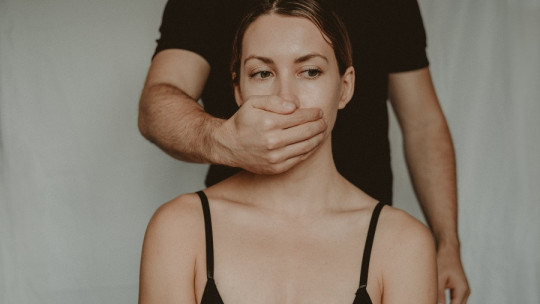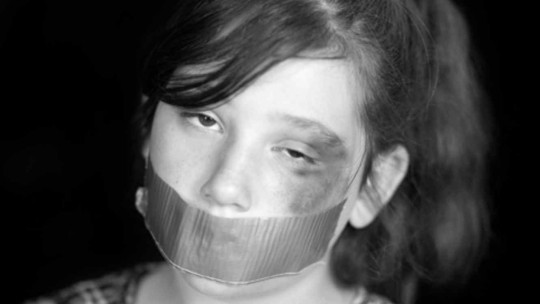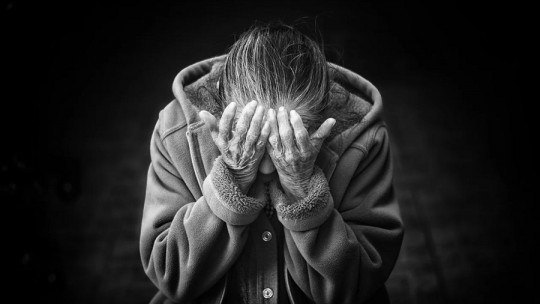Domestic violence is a serious problem that occurs in all social groups, professions, cultures and religions. The male gender is even popularly conceived as the sole aggressor, but the reality is that in many cases women become the aggressors, so it also happens in both genders.
It is a public health problem that, unfortunately, is increasing. In Mexico alone, in the last year there was an increase of 9.2% in investigation files for this crime, according to Figures from the Executive Secretariat of the National Public Security System (SESNSP).
As if that were not enough, according to the results of the latest National Survey on the Dynamics of Relationships in Homes (ENDIREH), prepared by the National Institute of Statistics and Geography (INEGI), it indicates that 10.8 million men married or in union with Women aged 15 years or older have exercised some type of violence against their partners throughout their relationship, specifically 40% emotionally, 25.3% economically, 11.6% physically and 5.3% sexually.
Types of violence
The above figures illustrate the different categories that exist in which a person can be harmed, depending on the content of the attack. More information is provided below.
Physical violence
This category involves hitting, scratching, pulling and pushing; It is easier to identify because It usually leaves marks on the body such as bruises or visible wounds which culminates, on many occasions, in the death of the victim.
Psychological or emotional violence
The person attacks through hurtful words such as insults or nicknames, with the intention of denigrating the couple These types of actions produce in the victim feelings of anxiety, despair, guilt, fear, shame, sadness, as well as low self-esteem.
Sexual violence
Behaviors with sexual connotations are carried out in a forced manner , without the consent of the victim, just for the simple fact of being her partner. It can include physical and psychological violence.
Economic violence
It involves stealing your partner’s money, misusing your bank account; and even when only the abuser is the one who works, he threatens to deny the money to his spouse.
The keys to domestic violence
Men who are aggressors generally witnessed domestic violence against their mothers in their childhood, so They grew up in a violent environment where there were established roles for each gender and where women were denigrated; so there is a learned behavior towards the partner. This means that in his future relationships, the person ends up repeating what he witnessed in his childhood, since he unconsciously chooses as a partner someone with a submissive profile, then playing a dominant role.
In addition to low self-esteem, the aggressor has a low tolerance for frustration That is to say, he gets frustrated easily, and it is in those cases when he has outbursts of aggression and blames the victim for provoking him, so that what he wants most is to have control, both of the relationship and of his spouse.
If we carefully examine the types of violence mentioned above, we can identify that the common denominator is the desire for power on the part of the aggressor towards the victim; That is why he denigrates her physically, psychologically and sexually. In the case of the economy, it is a different kind of power, since money is a very important resource; If the victim is financially independent, he or she has a certain degree of power, so in economic violence, the aggressor also seeks to take that away from him or her. That is why behind domestic violence by men we find sexist ideas.
On the other hand, women who are victims of domestic violence Many times they experienced something similar in their childhood; They grew up in an environment where violence was accepted and experienced being the subordinates of the men in the home. Likewise, submission is also a posture that is learned, probably due to the belief that this role in the relationship is normal.
Apart from low self-esteem, the victim You may experience depression and emotional dependence on your partner , which causes not wanting to separate from him, manifesting love for him. So when the aggressor blames her for provoking outbursts of violence, the victim accepts responsibility. Even in submission, sexist ideas are found in the victim’s mind.
And when there are children…
When there are children involved in the relationship, they can suffer various behavioral and emotional problems, which will soon manifest themselves with poor academic performance, being participants or victims of bullying, isolation, being prone to drug use, falling into depression resentment, low self-esteem or post-traumatic stress, among others.
By growing up and developing in an environment in which violence is accepted, they have a high probability of repeating patterns, either as aggressors or victims in their relationships, just as happened with their parents. It is worth mentioning that it is within the family where children learn to define themselves, to understand the world and how to relate to it through what they observe and learn.
cycle of violence
The interaction between the aggressor and the victim is usually a vicious circle that constantly feeds itself. Below I present the three phases in which it is composed.
Tension build-up phase
In this first phase insults, reproaches, ridicule, scenes of jealousy occur and attempts to control the victim’s actions, as well as constant and increasing discomfort. For example: criticizing the way he dresses, prohibiting him from going out or certain activities.
explosion phase
This part represents a higher level than the previous phase. At this point is when the person has a violent outburst in which there are blows, breaking of objects and threats
Regret or honeymoon phase
At this last level, The person says he is sorry and asks for forgiveness (not without first holding the victim responsible for having violated her), but promises to change. Suddenly the romanticism returns to the relationship and the aggressor becomes a detail-oriented person for a while, until he presents something that he does not like again so that the first phase begins again and so on.
When the victim is a man
There are also situations in which the woman is the aggressor and the man is the victim. In the same way as the man in the role of her aggressor, the woman seeks to have power and control over her partner.
In these cases, The woman begins with psychological violence until it becomes physical over time : Hits, slaps, or pulls your husband.
Although he is stronger than her, the husband does not apply violence because he considers it cowardly to use force on a woman, so he prefers to isolate himself, feeling deep shame and remaining silent so that no one finds out about his humiliating situation; Probably if he decides to tell someone, they would simply not believe him or make fun of him, including the authorities in case of a complaint. This way, man suffers psychologically trying to keep up appearances
What to do about domestic violence
Below I offer a series of steps to follow to prevent and act in the event of domestic violence. Aimed at both men and women. Identify the signs:
If your partner does more than one of the actions mentioned above, you are already a victim of some type of violence and soon your partner could start hitting you. Talk to someone you trust about this and prepare an emergency plan to protect yourself and your children if necessary. Try to have a place of refuge, for example, the house of someone you trust.
If you are already immersed in abuse, carry out the emergency plan to protect yourself, Leave your house and go to that place of refuge Consult a lawyer about your situation, since it is necessary to proceed legally against the aggressor, who will be arrested and taken to criminal proceedings.
If you do not have a shelter, there are ones sponsored by municipalities, non-governmental organizations or religious institutions that help the victim and their children to be protected by covering their physical and emotional needs. Even in some of these places they offer legal advice and psychological support to provide the necessary help.
What to do if you are a close friend or family member of the victim
Do not judge or criticize their attitude or inability to cope with the problem. On the contrary, Take time to listen, understand, and vent Let him know that he is not guilty of anything. Also offer your support in whatever way you can help, for example in caring for their children, offering shelter, or finding a lawyer.
Consider the safety of the person and their children Even in situations where the attacked person does not perceive reality as it is and is not aware of being a victim of violence, you can be the one to ask for support and file a complaint with the authorities. Your collaboration can make a difference and avoid serious consequences.
What to do if you are the aggressor
Finally, if you are the one who exercises violence, reflect on the consequences that your behavior may cause. Take the first step, Accept that you have a problem and seek professional help
Conclusion
Courtship is the prelude to marriage. If at that stage there is already a toxic relationship in which one of the members of the couple tries to control and have power over the other by manifesting any of the types of violence mentioned above, there is a high probability that cases of violence will occur in the future. domestic violence.
It is during courtship when risk attitudes must be identified Every person should pay attention to the way their partner treats them; find out what her values are; as well as being attentive to the way in which she treats her parents and other people, particularly those who provide her with a service in public places. Since the same way you treat them is how you will treat your spouse.









